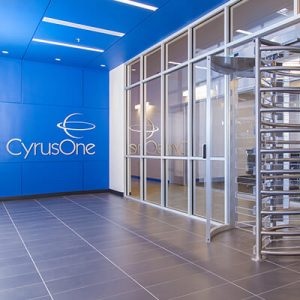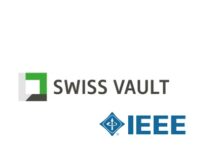The adoption of hyperscale process, practice and technology in enterprise data centre has been a work in progress for some time. Need for very rapid scale of capacity, combined with the availability of resources to design and build highly efficient, custom systems and facilities has set the hyperscale provider apart, however longingly the enterprise operator might eye the industrial systems created by the large, global providers. But as senior analyst, datacenter technologies for the 451 Research group, Jeffrey Fidacaro points out in the 451 Impact Report reproduced below, the enterprise customer is changing, running increasingly distributed IT environments.
According to Fidacaro, this growing requirement for distributed infrastructure, along with increasing demand for scale, security and connectivity from cloud service provider tenants is placing new demand on suppliers of multi-tenant data centre, who in turn are looking to leverage new technologies to maintain competitive edge. This report is part of an ongoing 451 investigation into changes in the MTDC market, which focuses on Dallas-based CyrusOne’s exploitation of hyperscale approaches in the development of “highly connected facilities at scale.” To learn more about how modular design and interconnect fabric are helping CyrusOne tackle issues of cost, connectivity and distributed service delivery, read on (ed.)
Multi-tenant datacenter (MTDC) suppliers are looking to appeal to a changing enterprise customer that has an increasingly distributed IT environment, while also meeting the demands of rapidly growing cloud service providers. CyrusOne targets the Fortune 1000, including the largest enterprises and cloud service providers, and looks to differentiate itself with faster, more efficient capacity builds using its trademarked Massively Modular construction approach.
It is also taking on bigger-scale datacenter projects and investing in its National IX interconnection platform, linking its portfolio of datacenters to offer greater performance and more flexible, secure connectivity options. This report is part of an ongoing series that focuses on how MTDC providers are exploiting new technologies for competitive gain and to drive growth.
Context
Dallas-based CyrusOne is a REIT (real estate investment trust) that was founded in 2001, acquired by Cincinnati Bell in 2010, and spun off in 2013 as a public company (Nasdaq: CONE). The company began with Cincinnati Bell’s Midwest datacenter footprint, and found success in Texas, with large datacenters and campuses in Dallas, Houston and Austin. It has since entered the Chicago, New York/New Jersey, Northern Virginia, Ohio and Arizona markets. It has also expanded internationally with facilities in the UK and Singapore.
The company recorded revenue of $529m in 2016, and issued guidance for a revenue range of $670m to $677m for 2017. Its portfolio consists of more than 40 facilities, and more than four million square feet of total net rentable space. The company focuses on larger deployments with 195 customers representing the Fortune 1000 and accounting for nearly half of the Fortune 20 companies.
CyrusOne started out serving oil and gas customers, and has diversified its customer base in the financial services space while focusing on attracting more cloud service providers. Based on 3Q 2017 annualized rent, its top three verticals are now the cloud at 29% (including nine of the top 10 cloud companies), financial services at 20%, and energy at 11%.

CyrusOne is planning a European expansion on a large scale. The provider says it is hoping to acquire land for greenfield development in parallel with its investigation into joint venture or acquisition opportunities with an established provider for fast market entry. It cited cloud provider customers as its main reason for acting on European expansion. 451 Research believes a presence in Europe could also boost CyrusOne’s interconnection business, allowing it to offer access to services on a global scale.
The company also formed a new strategic partnership with GDS, a leading datacenter provider in China, expanding its international presence. The partnership includes a $100m investment from CyrusOne, and collaborative sales and marketing efforts to cross-sell datacenter space and related services in both the US and China.
Technology
CyrusOne developed a set of engineering principles and construction methods for datacenter construction, called Massively Modular, to significantly shorten its build times and to deploy its capital more efficiently. The company says that its modular approach allows it to roll out large-scale data halls with power in 12-16 weeks (and in some cases as fast as 10 weeks). The end result is that CyrusOne’s build costs are approximately $6.6m per megawatt compared to a broader colocation and enterprise average of closer to $15m per megawatt.
The Massively Modular approach starts with a large powered shell – this can be a greenfield new build or a brownfield retrofit. The company selects shells that are capable of scaling out to meet future power and colocation space needs. It then fits out individual data halls using its modular construction approach taking into consideration customer-specific requirements. For example, it brought a 30MW facility online in only six months in Sterling, Virginia.
True to CyrusOne’s large-scale datacenter strategy, individual data halls are typically 60,000 square feet and contain a minimal number of columns to maximize available colocation square footage. Most deployments for web-scale companies are build-to-suit, with the power and cooling modules located outside of the data hall. Tenants can deploy different power densities (up to 900W per square foot) and resiliencies to the same footprint. For highly resilient requirements, CyrusOne designs for 2N redundant electrical and mechanical systems.
The way that datacenter operators design and construct facilities is changing, driven in part by standardization and industrialization. The key benefit of the prefabricated modular datacenter methodology, regardless of design choices, is in the manufacturing, assembly and testing of highly complex and mission-critical facility subsystems in a controlled, standardized factory environment. CyrusOne’s modular construction approach includes pre-integrated and pre-tested electrical and cooling skids. However, it does not subscribe to prefabricated container or enclosure datacenter designs because it believes they are not economical or viable for its large-scale datacenter strategy.
CyrusOne outsources the engineering and construction work, partnering with a wide range of regional construction managers to implement its design approach. The company involves its construction partners early in the process, and seeks to collaborate with their engineers to assess innovative datacenter technologies including efficiencies in power generation, cooling, operations and staffing.
Another component of CyrusOne’s strategy is its National IX (internet exchange) Platform. It launched the National IX Platform in April 2013, enabling interconnection between CyrusOne datacenters – from CyrusOne to customers’ privately owned, on-premises datacenters; between a customer and a third-party carrier; or between customers. The company says the platform provides high-performance, low-cost data transfer and accessibility. The network connects facilities across states and between metro-enabled sites (including major carrier hotels). National IX locations include Dallas, Houston, Austin and San Antonio, Texas; Chicago; Cincinnati, Ohio; Sterling, Virginia; New York Metro; and South Bend, Indiana.
The platform provides an optical network between sites with connectivity speeds up to 10Gbps (it’s in the process of scaling up to 100Gbps). The platform has 2N redundancy at both the Ethernet and optical switch layers. Its metro optical interconnected platform also uses dual fiber rings (typically from two different vendors).
Among the use cases for the platform are active-active replication, multisite failover, or disaster recovery where a customer may need to instantly turn up capacity. Through the National IX platform or cross-connects, customers can directly connect with public cloud services. The platform also allows a customer to more efficiently connect to a specific carrier or business partner via a carrier hotel that may be located in a separate region in the US.
CyrusOne reported interconnection revenue of $9m for Q3 2017, up 21% year-over-year and representing roughly 5% of the company’s revenue in the quarter. Interconnection services were included in 91% of the leases it signed in the quarter. The company says that it averages more than 11 cross-connects per customer, up from three in 2011, with more than 13,800 total cross-connects across its portfolio. The company is marketing its National IX Platform to cloud services providers (and enterprises with a national footprint) since they may find the network of interconnected datacenters appealing.
Competition
 CyrusOne is part of a group of top MTDC providers that operate in North America including Equinix, CoreSite and Digital Realty Trust. Competition will vary by market, but other competitors targeting larger-scale deployments in the US include DuPont Fabros (Digital Realty), IO, RagingWire, QTS Data Centers, Switch and T5 Data Centers. Equinix, in particular, has made interconnection a central part of its strategy.
CyrusOne is part of a group of top MTDC providers that operate in North America including Equinix, CoreSite and Digital Realty Trust. Competition will vary by market, but other competitors targeting larger-scale deployments in the US include DuPont Fabros (Digital Realty), IO, RagingWire, QTS Data Centers, Switch and T5 Data Centers. Equinix, in particular, has made interconnection a central part of its strategy.
As it expands its footprint internationally, CyrusOne will compete with local MTDC suppliers. For CyrusOne, edge colocation capacity is currently not a focus because it strategically focuses on the opposite end of the spectrum – very large-scale datacenters.
SWOT Analysis
Strengths
CyrusOne has a solid approach for building large-scale datacenter capacity quickly, relative to traditional approaches. Its connectivity platform provides flexible options, and offers an expanding ecosystem of carrier partners, cloud providers, network providers and enterprises.
Weaknesses
CyrusOne is relatively lacking in IT services, and therefore may miss opportunities where customers require advanced services.
Opportunities
Demand from the rapid growth in cloud infrastructure and from enterprises shifting workloads off-premises should benefit CyrusOne. Its efficient and modular approach in investing in new capacity and its focus on interconnection match the requirements of cloud providers.
Threats
The MTDC market is highly competitive, especially from Equinix, which has been courting service providers for many years, and has a larger interconnection business.








